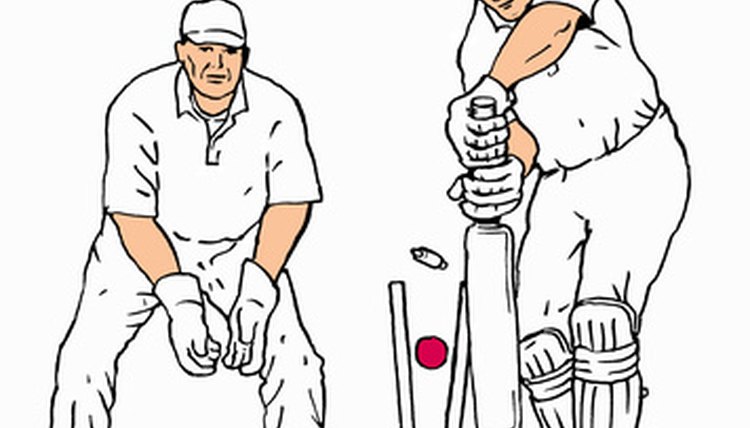Tennis Ball Cricket Rules

Tennis ball cricket uses a tennis ball instead of the standard leather cricket ball. Not only does this make the game easier to learn for newcomers, it also reduces the chance of injuries. The rules of tennis ball cricket are almost identical to the rules upheld by the International Cricket Council (ICC) for the traditional game. However, in 2002 the Tennisball Cricket Association (TCA) approved a set of rules officially governing tennis ball cricket. While the 42 general rules of traditional cricket are the same as tennis ball cricket--including scoring, outs and the number of players per side--there are minute differences in the scope of the match and some required equipment.
Protective Gear
Protective gear is an essential part of a traditional cricket match due to the heavy leather ball. However, tennis ball cricket reduces the need for some required protective gear. The rules of tennis ball cricket allow for certain protective gear, including batting gloves, groin guard, helmet, wicket keeping gloves and upper body guard. Traditional tennis ball cricket players wear less protective padding on the lower body than is allowed in traditional cricket simply because it is not as necessary.
The Bat
Although the ball in tennis ball cricket is different from that used in the traditional game, rules surrounding the bat, its length and materials are practically identical. According to “Understanding Cricket,” by Julia Hickey, the maximum length of a cricket bat is 38 inches. Law 6 of the “Laws of Tennisball Cricket & Playing Conditions” upheld by the Tennisball Cricket Association, uses this same rule, adding that the bat should be less than 4 inches wide. The bat should also be made entirely of wood.
Pitch
The pitch is the playing area of a cricket match. The ICC requires that the pitch be 66 feet in length. However, the TCA law book requires the tennis ball pitch to be 64 feet long and 10 feet wide. Tennis ball cricket also requires that umpires communicate the condition of the pitch to the proper person before the start of the match even though the umpires decide whether or not the pitch can be used.
Matches
A tennis ball cricket match is played as a one-day event, which is also known as a limited overs match. The match is made up of one inning with between 10-25 overs, or limited by a certain amount of time. All decisions about match length must be discussed and agreed upon before the start of the match.
References
- "Understanding Cricket"; Julia Hickey, 2006
- Van Huis, A. “Edible insects: Future prospects for food and feed security.” FAO Forestry Paper 171. Food and Agriculture Organization of the United Nations. 2013.
- Lundy ME, Parrella MP. “Crickets are not a free lunch: protein capture from scalable organic side-streams via high-density populations of Acheta domesticus.” PLoS One. 2015 Apr 15;10(4):e0118785.
Writer Bio
Marissa Poulson has been a freelance journalist since 2009. Her arts and entertainment reviews can be found in The Examiner. Poulson holds a Bachelor of Arts in creative writing from Arizona State University.
